2011 John Deere Gator XUV 625i 4×4 Review
When you think of John Deere most of us conjure up images of work vehicles, rather than machines that encourage you to have fun tooling around the trails. However, after having had the chance to test out John Deere’s 2011 lineup of side-by-sides we’ve come to realize that these machines offer plenty of opportunity to play once the work gets done. A great example of this is the Gator XUV 625i 4×4.
Although considered the base Gator for 2011, there was nothing basic about how the Gator 625i performed or looked. It is available in Real Tree Hardwoods HD Camo, Olive and Black, and the well known John Deere Green and Yellow. It comes standard with everything you need to have fun, be comfortable and get the work done.
Performance
We traveled to the popular Carolina Adventure World in Winnsboro, SC to do the vehicle review and testing. This area has a very extensive trail system set up and the route we took allowed us to test all of the Gator’s capabilities.
Over the last few years we have been on almost every trail at Carolina Adventure World on a variety of vehicles and the Gator 625iI handled every aspect of the trail we were on without hesitation.
The 23-horse power, 617cc V-Twin engine took us to the maximum 30 mph speed very quickly. For those less inclined to go fast, John Deere has an optional Speed Limiter kit, which will allow full power and acceleration with a keyed lockout that limits the top to 20 mph.
Though we certainly didn’t need it in low-lying South Carolina in the middle of June, it was nice to know that the John Deere 625i is equipped with electronic fuel injection. This will make it easier to start in any type of weather and in higher altitudes.
It’s still a work vehicle first, but the Gator XUV 625i is a capable and fun-to-ride machine out on the trails.
As soon as we reached the first obstacle on the trail, we reached over and flipped the switch to engage four-wheel drive. That worked for most of the course, but we did stumble across one area where we needed to take advantage of the added feature available on the Gator of locking the rear differential. This allows both rear wheels to work together to get us through that rough spot.
The ride was more comfortable than we expected and the Gator seemed very stable in all the different types of terrain we faced on the trail system. This was partially due to the solid core steel sway bar with double-ball drop link, which helps to reduce body lean and increase durability. The low center of gravity on this vehicle and long 79-inch wheelbase also increases its stability.
It felt very secure even in the rougher areas due to the Independent double-wishbone long-travel suspension and the 11 inches of ground clearance helped as well and kept us from getting stuck on rocks we found in some of the rougher areas of the trail. The full-steel skid plate guards the underbody to help protect it when you test those limits.
The full-clutch enclosure also allowed us to go in through a couple of creek crossings without any problems either. The specifications on this vehicle say it can access water up 22 inches and we’re quite sure we had it in water at least that deep and have no issues to report.
Safety Gear
This vehicle comes with Standard OPS (Occupant Protection Systems) which includes a passenger side handhold and 3-point seats for both driver and passenger.
Cargo
As John Deere’s entry-level model, we were fairly impressed with the cargo capabilities of the Gator 625i. Whether you are at work on the farm, out having fun on the trail, this machine seems to have enough cargo and towing capacity to handle most anything you throw its way..
With 16.4 cubic feet and 1,000-pound weight capacity, the Gator 625i has one of the largest cargo boxes among its closest competitors. It also has a 1,500-pound towing capacity, a 1,400-pound payload capacity. As for the towing, the Gator comes standard with an integrated 2-inch front and rear receiver hitch.
With 1000-pounds of cargo bed capacity, the 625i is a serious work companion.
The cargo box comes with 20 tie-down points to make loads easier to secure. It has a standard tailgate with gas-assist for easier dumping. You can also convert it to a flatbed very quickly. Available options include spray-in bed liners and cargo box power lifts.
One of the things that we like the most about this part of the vehicle is the Quick-Clamp system, exclusive to John Deere, which makes adding or removing attachments and accessories very quick and simple, which is good no matter what task you are tasked with.
Attachments and Options Available
There are a ton of options and attachments available for the John Deere 625i. Each of the options is available factory installed when you order your Gator, so there is no hassle or trouble getting them put on.
| Popular Attachments For Gator XUV 625i | |
| Camo Seat Cover (Large) | Deluxe Seat Cover |
| Full-size Vehicle Cover, Cab or Structure | Heater Fitting Kit |
| OPS and Deluxe Cap Camo Cover | OPS Camo Organizer |
| OPS Camo Soft Roof | OPS Light Kit |
| OPS Organizer | OPS Soft Roof Kit |
| Poly Cart Hard Top | Poly Half Windshield Kit, OPS |
| Poly Roof Kit, OPS | Winch Accessory Kit |
| 1- 7/8 inch ball hitch | 2 inch ball hitch |
| 2 inch drawbar kit | 17AT Utility Cart |
| 25 Gallon Bed Sprayer | 40 Gallon Sprayer |
| 40 Gallon Tow Behind Sprayer | Cargo Box Side Extension Kit |
| Adventure Light Kit | Plow Markers |
| Powertack Markers | Spray-in Bed liners |
| Cargo Box Power Lifts | |
Compared to the Competition
John Deere actually makes a point to compare its vehicles to the competition. In this case, John Deere used the Polaris Ranger 500 and the Kawasaki Mule 4010 4×4.
All three side-by-sides feature liquid cooled, fuel injected, continuously variable engines. Both the Gator and Mule have Twin cylinder, 617cc mills, while the Ranger is equipped with a single cylinder, 498cc engine. The Ranger offers the highest top speed (47 mph), followed by the Gator (30 mph) and the Mule (25 mph).
If John Deere’s familiar Green/Yellow colors aren’t for you, the 625i is available in Camo or a Olive/Black color scheme.
The front suspension varies between the three machines. The Gator has fully independent Dual A-Arm with adjustable coils. The Ranger also has Dual A-Arms, while the Mule features Independent MacPherson struts. The front suspension travel is 8 inches in the John Deere, 9.6 inches in the Polaris and 3.9 inches in the Mule.
The rear suspension on the Gator is fully Independent Dual A-Arm with adjustable coils and sway bar. In the Ranger, the rear suspension is Dual A-Arm IRS and in the Mule it is Semi-Independent, De Dion axle with leaf springs and shocks. The rear suspension travel is 9 inches in both the John Deere and the Polaris 500 and 2.8 inches in the Mule.
The ground clearance on each of the machines varies. The John Deere has 11 inches of clearance and the Polaris Ranger has 12 inches while the Mule only has 6.9 inches of ground clearance.
Both the Ranger and the Mule have bench seating while the Gator has bucket seats. The towing capacity of the Gator and Ranger are both 1500 lbs while the Mule is only 1200 lbs.
When it comes to dimensions, the Gator is the longest (119 in.), widest (62 in.), shortest (75 in.) and has the longest wheelbase (79 in.). As for weight, the Gator comes in the middle at 1,386 pounds, compared to 1,214 for the Ranger and 1,406 for the Mule.
The Gator cargo box comes with polypropylene side panels and tailgate, steel floor and load guard. The Ranger has a plastic cargo box and the Mule has a steel cargo box. The dimensions of the cargo box on the Gator (L x W x D) are 45 in. x 52 in. x 11.5 in. compared to 36.5 in. x 54 in. x 11.5 in. for the Ranger and 46.3 in. x 51.6in. x 11.3 in. for the Mule. Both the Gator and Ranger are rated to carry 1,000 pounds, while the Mule can haul 800 pounds.
Overall
The John Deere Gator XUV 625i looks like a solid crossover vehicle that should be a good fit for anybody who wants to own one vehicle that can be used on the farm and played with out on the trail. Pricing on this model starts at $9,899.
Specifications
Engine:
Electrical:
Fuel System:
Transmission:
Suspension and Steering:
4WD:
Hitch:
Dimensions:
Tires:
OPS (Occupant Protective Systems):
Related Reading
More by ATV.com Staff



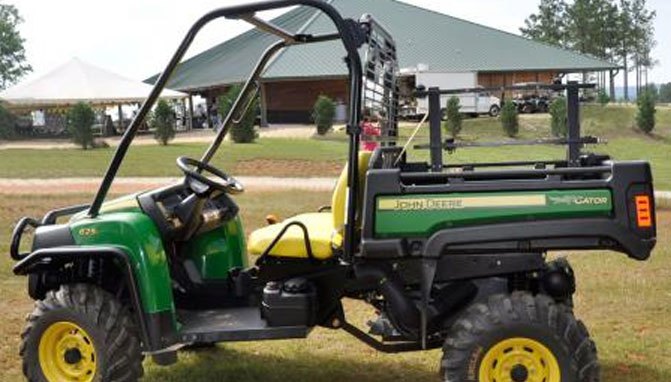





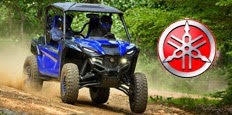






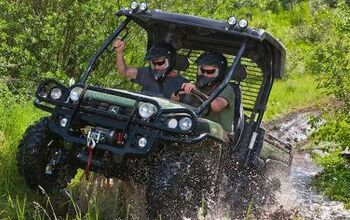
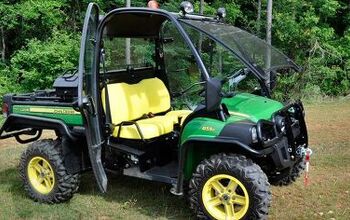
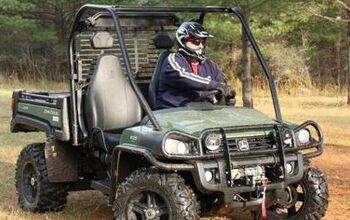
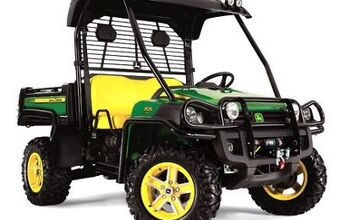
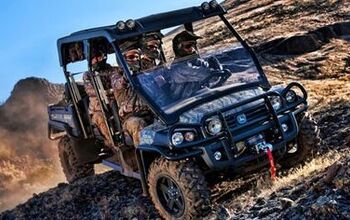
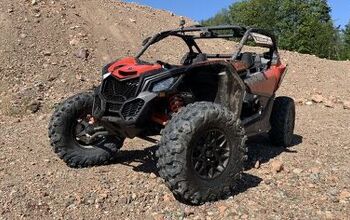
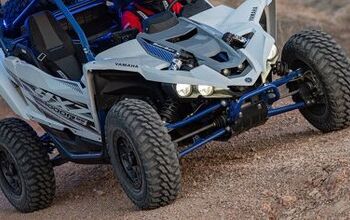
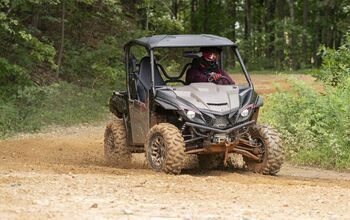
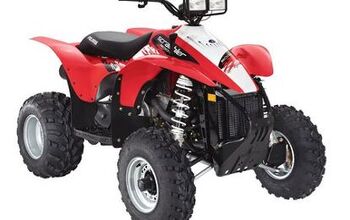
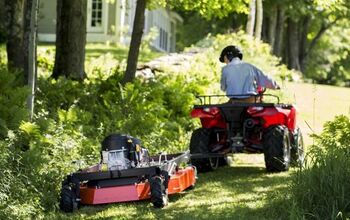
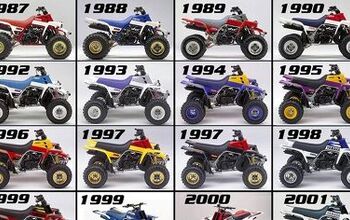
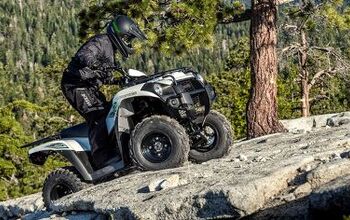
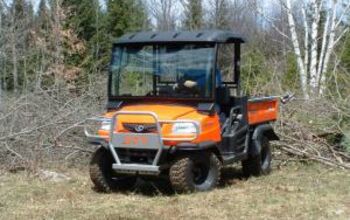

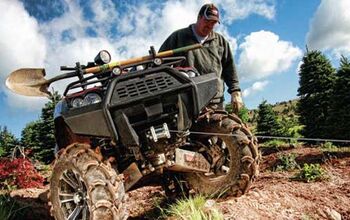
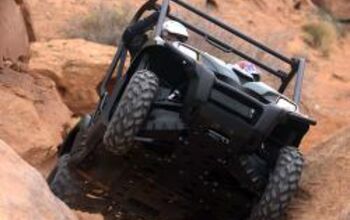
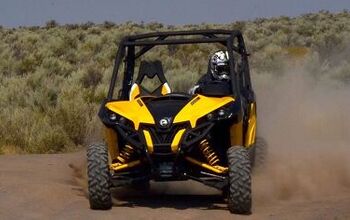
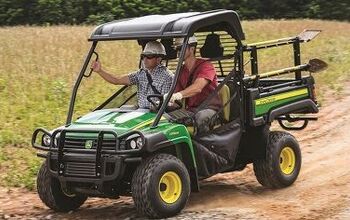
Comments
Join the conversation